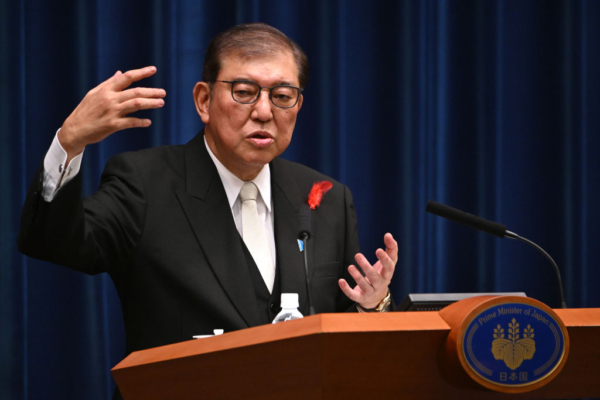On Wednesday, October 9th, Japanese Prime Minister Shigeru Ishiba dissolved the House of Representatives and scheduled a vote and counting for October 27th. As of that day, political parties from all sides had put forward over 1200 candidates to compete for the 465 seats in the House of Representatives.
The decision to dissolve the House of Representatives came just eight days after Ishiba took office, setting a record for the shortest time since World War II. By submitting a motion of no confidence against the cabinet, he thwarted the opposition’s last-ditch effort to prevent the dissolution.
During a press conference, Ishiba stated, “The purpose of this election is to have the public recognize the efforts we have made to fundamentally change the direction of Japan’s social development.”
He went on to say, “Political progress cannot be achieved without the trust and understanding of the people. I seek the trust of the people, aim to gain their trust, and strongly support the policies of the new government.”
According to the Japanese Constitution, the Prime Minister has the authority to dissolve the House of Representatives on his own. Ishiba announced the decision to dissolve the House of Representatives before taking office as Prime Minister on October 1st, which triggered strong backlash from the opposition, who viewed it as a violation of the constitution.
The early election for the House of Representatives is seen as Ishiba’s attempt to secure a stronger majority in the lower house for the ruling party before his momentum as Prime Minister weakens.
Ishiba admits that the Liberal Democratic Party (LDP) is facing unfavorable circumstances, but he believes that the LDP and its coalition partner Komeito will secure a majority of the 465 seats in the upcoming election.
Prior to the dissolution of the parliament, the ruling coalition held more than 280 seats, with the LDP holding 258 seats and Komeito holding 32, well above the majority. Meanwhile, the largest opposition party, the Constitutional Democratic Party, held 98 seats.
During the party leader debate before the dissolution of the parliament, Constitutional Democratic Party leader Yoshihiko Noda criticized Ishiba’s attempt to divert voters’ attention to the “secret funds” issue, referring to allegations of improper reporting of political funds by LDP members.
This issue was also one of the reasons former Prime Minister Fumio Kishida announced he would not seek re-election. Last December, a scandal involving secret political funds exposed by the LDP severely damaged Kishida’s administration, with his cabinet’s public support falling to as low as 22.5%.
Dubbed a “lone wolf” within the LDP, Ishiba has long been seen as a force of opposition within the party. A survey released earlier this month by Kyodo News and simplified daily news showed that public support for the ruling party increased when Ishiba was selected as Prime Minister by the LDP.
However, compared to his predecessors, polls indicate that his cabinet’s approval rating is only around 50%, the lowest among past Prime Ministers. This highlights the challenging task he faces in winning voter support in the crucial election.
In his first policy speech to parliament on October 4th, Ishiba did not mention controversial issues such as establishing a stronger regional military framework (an Asian version of NATO), a more equitable Japan-US Security Treaty, allowing married couples to choose surnames, and other issues opposed by conservative factions within the LDP.
During his speech on Wednesday, Ishiba stated that he is taking time to build a broad consensus on his ideas starting within the party.
On Thursday, October 10th, Ishiba will fly to Laos to attend the ASEAN Summit, his first participation in diplomatic activities. He reiterated his commitment to balancing diplomacy and defense, contributing to peace and stability in the region.
(This article referenced reports from Kyodo News and The Associated Press)

